Growers Share Their Tips For Harvesting Lavender Sprigs (And Which Stems To Cut)

Reviewed By COLIN SKELLY

Colin is a Horticulturist and Horticultural Consultant with experience in a range of practical and managerial roles across heritage, commercial and public horticulture. He holds the Royal Horticultural Society’s Master of Horticulture award and has a particular interest in horticultural ecology and naturalistic planting for habitat and climate resilience.
Contributions From JULIA SNOWBALL

Julia is the Head Gardener at Yorkshire Lavender, a lavender farm based in West Yorkshire that is home to over 60 acres of land that is adorned by a huge array of lavender varieties and other herbs.

Owners of The Lavender Fields, the Butler family have been growing lavender commercially for nearly 25 years. Nick and Lyndsay are based in Hampshire and have invaluable experience in all aspects of lavender growing.

An Arable Farmer based in the Cotswold district. In 1999, Charlie began growing his own lavender and, more than 20 years later, is now the Owner of Cotswold Lavender, home to over 70 acres of lavender varieties.

Emily is a Gardening Writer, Photographer and Videographer from Derbyshire, UK. She is the Founder of Emily's Green Diary - a community of more than 75,000 people who share in her gardening journey.
IN THIS GUIDE
LAVENDER GUIDES
Companion Plants
Cuttings
French Lavender
Harvesting
Lavender Hedging
Pruning
Varieties
Winter
Lavender is a woody shrub that is available in hundreds of varieties and virtually all of them are free-blooming plants which can be harvested the same way.
The actual cutting of the stems is easy, but the tricky part is knowing when to harvest and just which stems to cut.
“How and when we harvest lavender depends on how it’s going to be used,” says Julia Snowball from Yorkshire Lavender.
Underneath we explain these tricky parts in a four-step harvesting process:
- Choose the ideal time to harvest for the best yield and plant recovery.
- Pick the right sprigs to snip when in bloom.
- Harvest the lavender using secateurs or gardening scissors.
- Use your lavender sprigs immediately in a vase or dry and store them for later use.
This process is explained in more depth in each of the below steps.
| Difficulty | Medium |
| Equipment Required | Gardening gloves, mini secateurs, wicker basket |
| When To Harvest | Spring or summer |
1) Choose When To Harvest
Keep observing your lavender plants as soon they start to form buds.
This can be any time from mid-spring to mid-summer depending on your variety and climate.
When to harvest will depend on what you’re harvesting for, says Nick and Lyndsay Butler, the owners of Lavender Fields in Hampshire.
“In the garden, if you are looking to dry lavender bunches, these are best picked when they are looking their best during flowering.
“For loose lavender that will be used for things like lavender bags, it is better to wait for the lavender to start to turn grey.
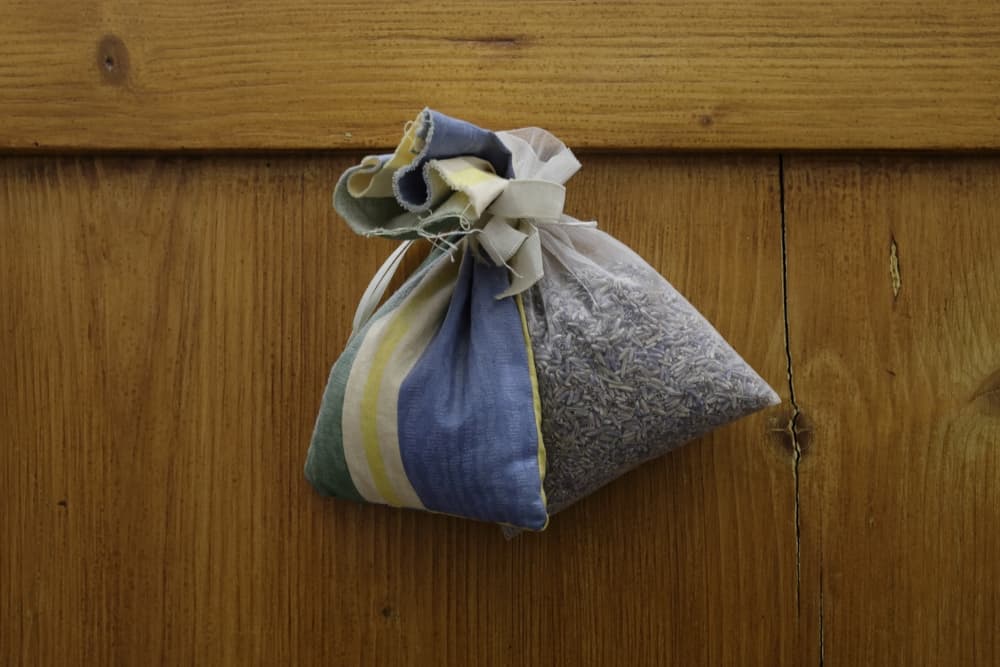
“This means that the lavender will have built up more oil in the flowers and will provide a better aroma.”
Julia has similar rules for harvesting:
“For culinary lavender, we cut the flowers just before they are fully open,” she says.
“For extracting the essential oil, we want to harvest the lavender just after the flowers have gone over, as at this stage, the oil content is at its highest.
“However, for craft work, we cut the lavender just before the flowers have gone over.”
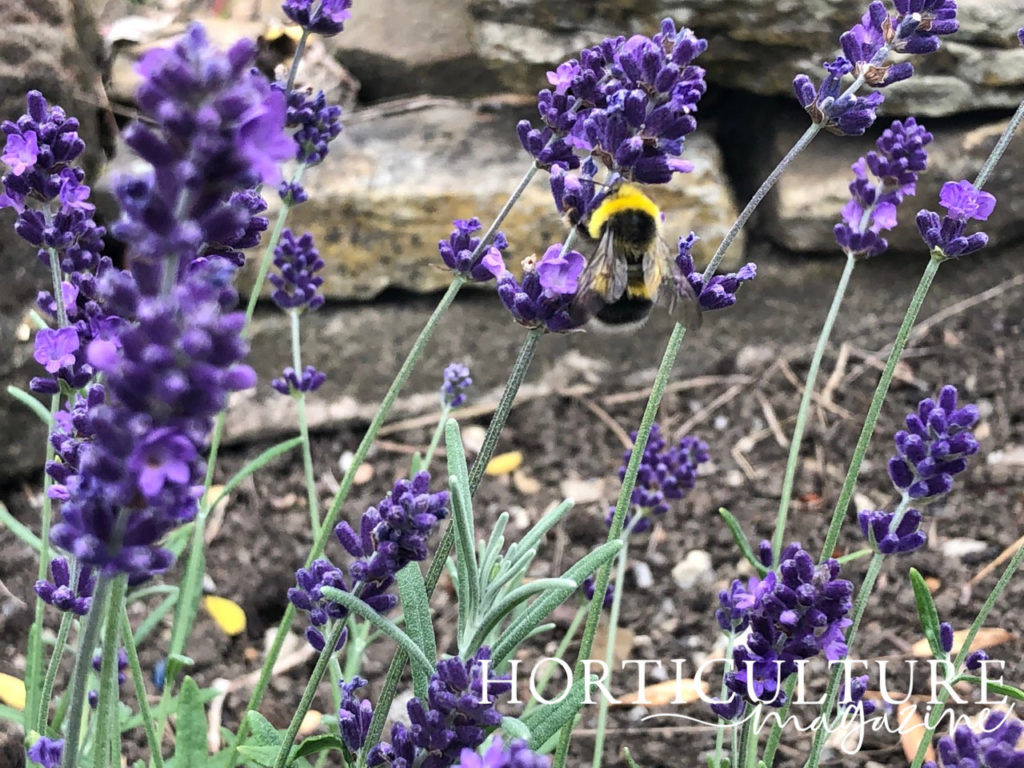
Alternatively, for harvesting loose lavender, when you see that around 40% of the buds have flowered, it is time to harvest your lavender.
“In the garden, wait until a third of the flowers have opened and gone over, a third are open and a third are yet to open before picking lavender for drying,” says Charlie Byrd, owner of Cotswold Lavender.
“This generally gives the best results and scent.”
2) Pick Your Stems
Harvest lavender in the early morning and no later than mid-morning, if the plants are in a location where they get morning sun.
On each plant, select stalks that mostly have buds opening into flowers.
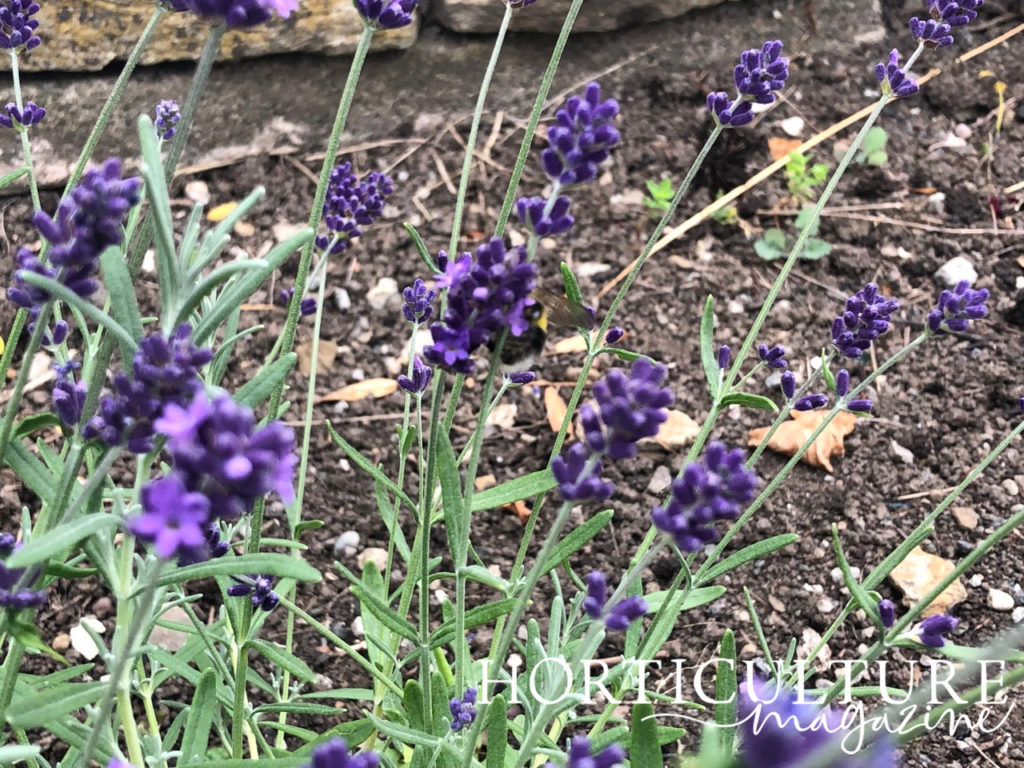
Do not select stalks with only buds or only flowers in full bloom.
Make sure you don’t take too many from any one plant.
3) Harvest Sprigs Cleanly
Cut each stalk with a pair of mini secateurs, or scissors if you prefer, making a clean cut with a single snip.
Stems should be cut 5-6cm above the woody part so that 2-3 sets of leaves and some green stems are left behind.
“I commonly get asked to rescue straggly lavender,” shares Horticultural Consultant Colin Skelly.
“Unfortunately, the plant won’t regenerate from a cut woody stem, so often it’s a case of removing the plant and replanting.
“This should be followed up with annual pruning, just above the woody section, to keep the plant vigorous and orderly.”
4) Use Immediately Or Dry & Store
If your lavender has been harvested for immediate use, for floral decoration or for culinary dishes, the stalks can go straight into a vase or be put in a pail of cold water.
Otherwise, the lavender flowers will need to be dried.
“Spread the stems on a well-ventilated area out of direct sunlight for drying,” says Charlie.
Lay out the stems loosely on a sheet of newspaper or a shelf with an open design in a cool, dark and dry room.
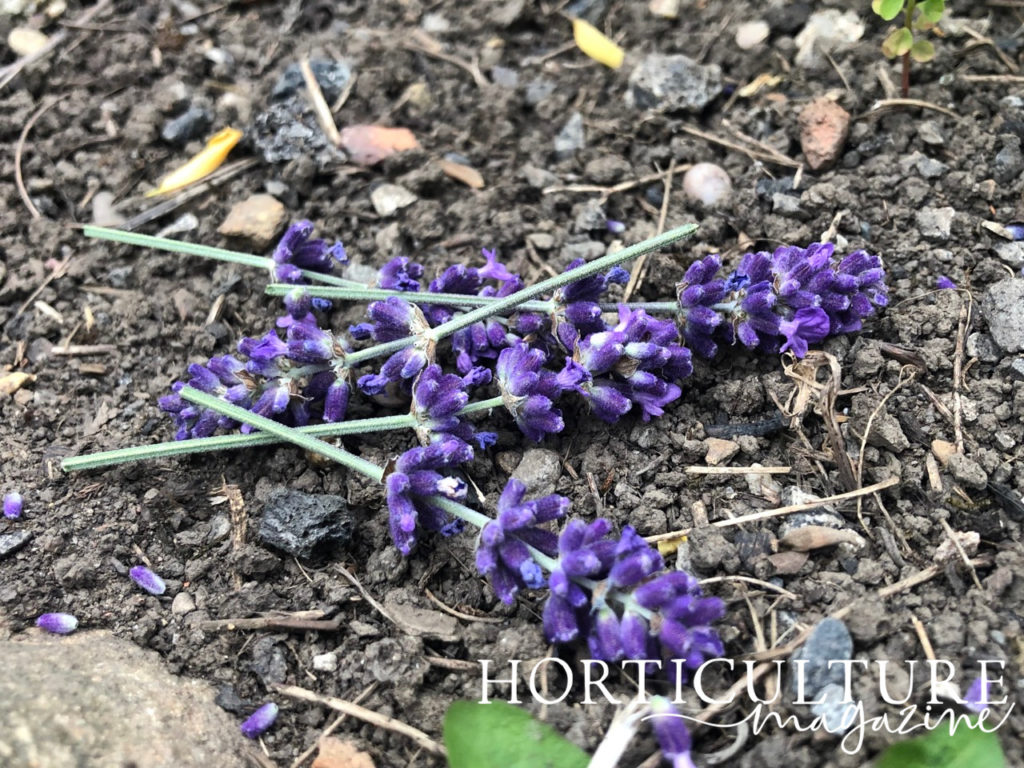
Alternatively, you can tie stems to make small bunches using twine or a rubber band, and hang them vertically from the stems, flower side down, as Julia shares:
“We make small bunches of the cut stems and hang them in a cool, dark and airy place until completely dry,” says Julia.
Nick and Lyndsay also recommend this method:
“Hang your lavender bunches upside down at room temperature for 3-4 weeks. Do not dry them in an airing cupboard, as they will dry too quickly and go very brittle.”
After the flowers are thoroughly dry, they may be cut from the stems and stored.
“Once dry, you can rub the flowers from the stems and use them for potpourri or lavender bags,” Charlie suggests.
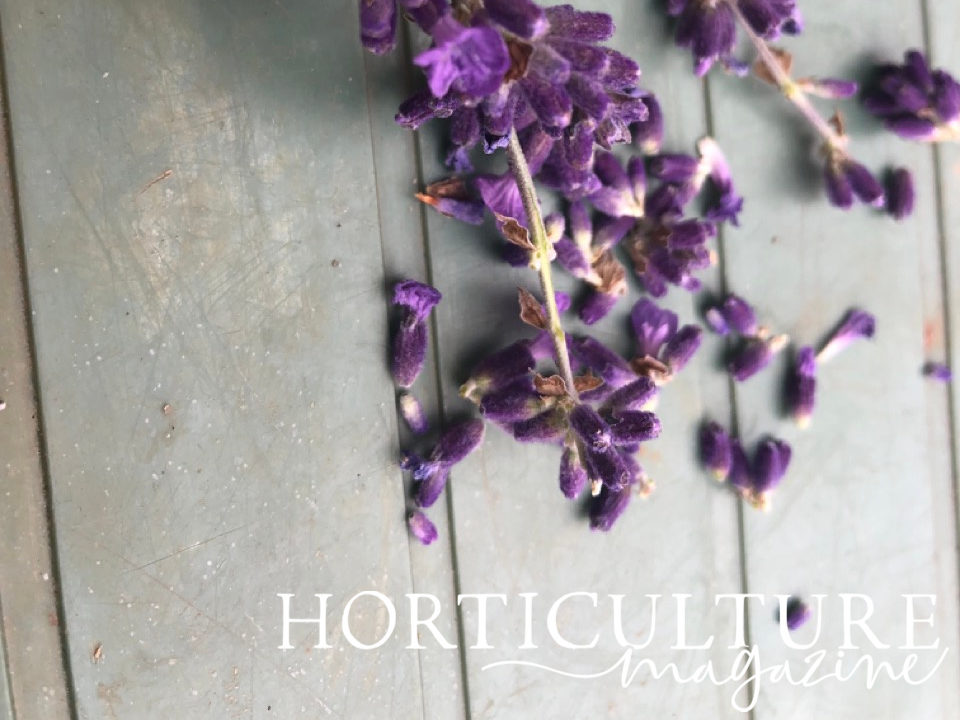
After the flowers are thoroughly dry, they may be cut from the stems and stored.
One way to store them is in airtight mason jars.
Be sure that the flowers are well and truly dry, as sealing and storing damp flowers will likely lead to mould and decay.
“Always keep dried lavender in a cool, dry place,” says Julia.

